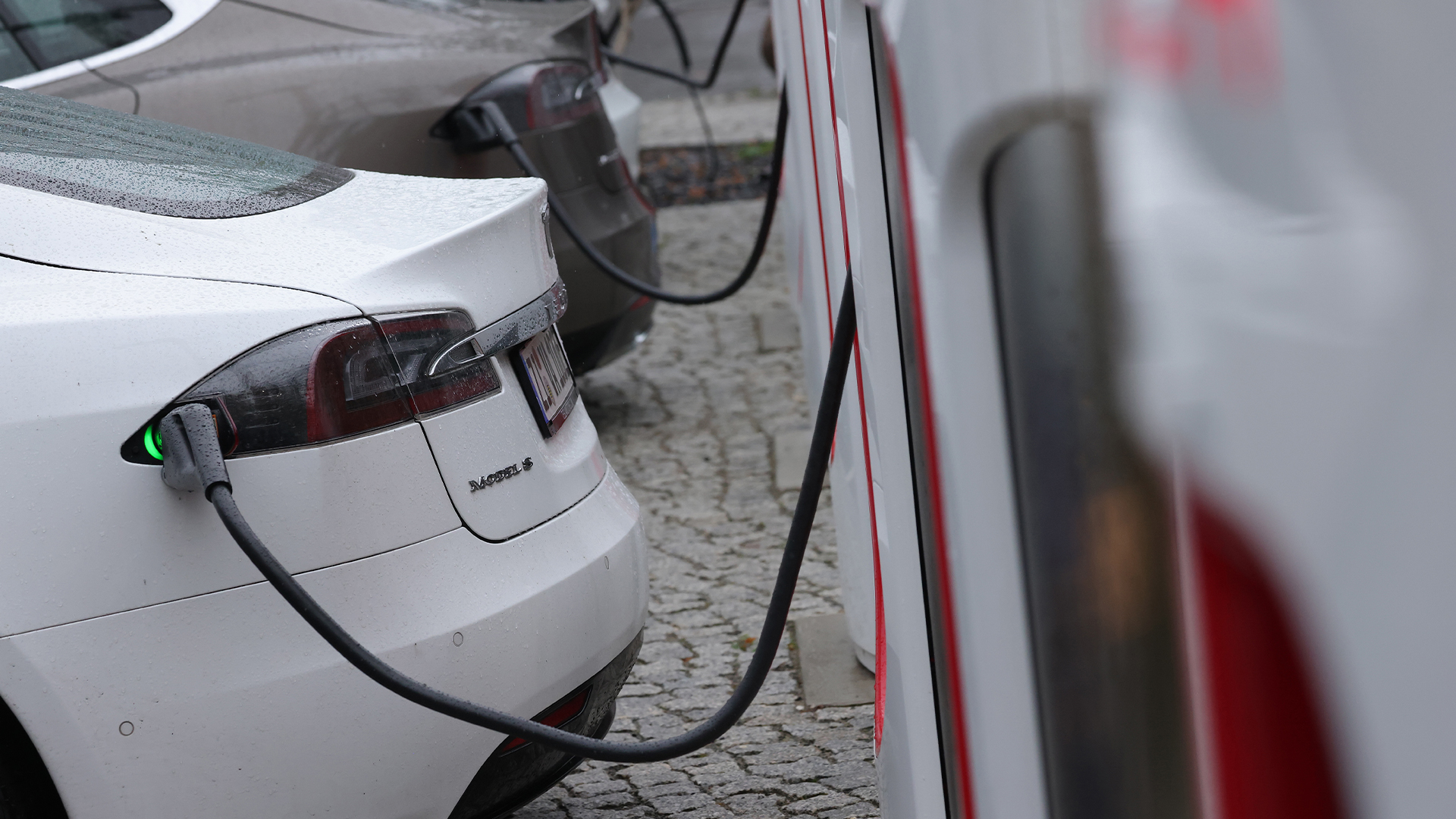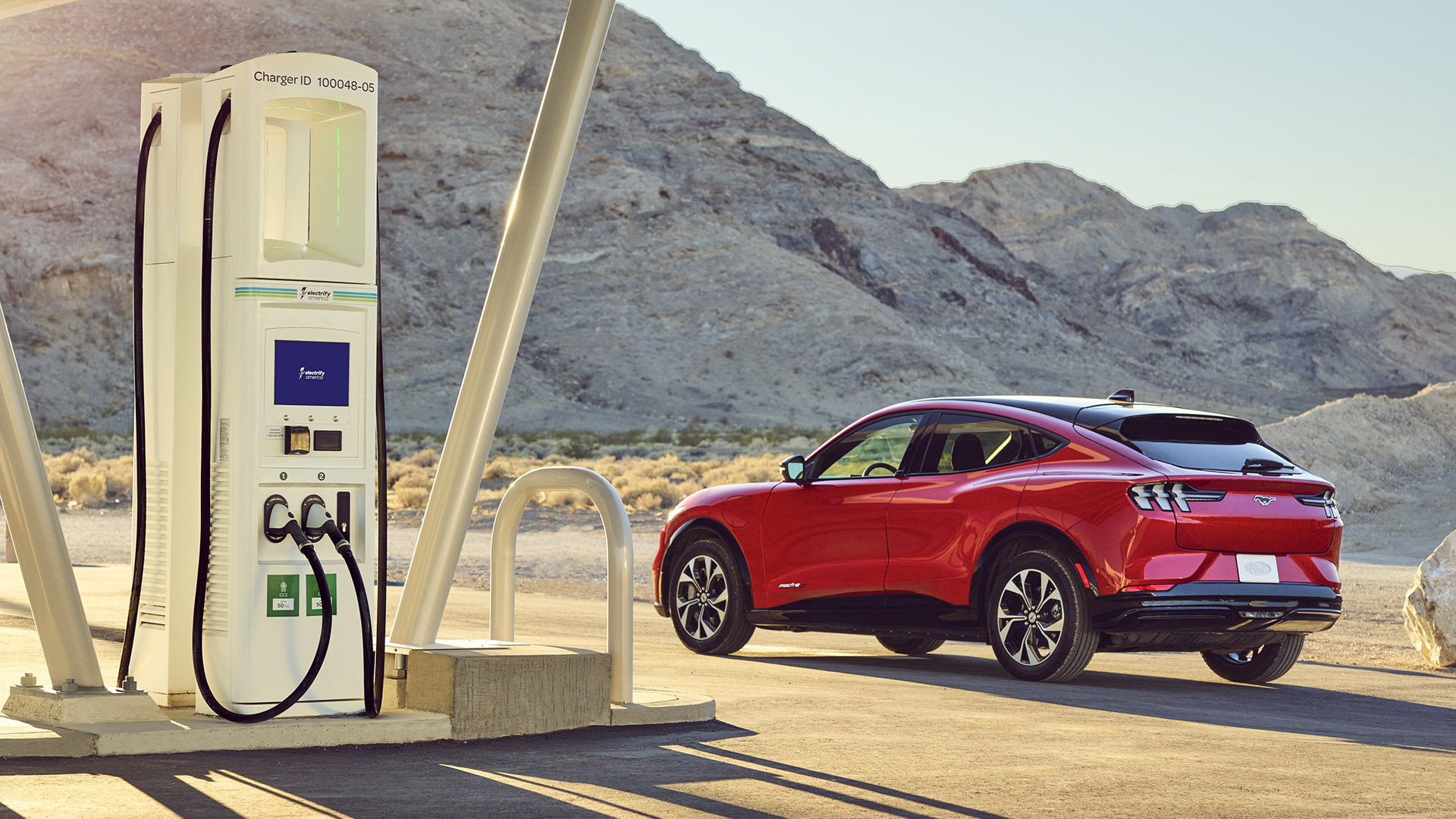

It’s no secret that EVs are a gigantic part of our motoring future. Everything from everyday drivers to muscle cars will sport battery power sooner rather than later, so it’s important the charging infrastructure in the U.S. is up to snuff. Even the federal government is pushing for more consumer-friendly standards to bolster EV adoption.
To get a better boots-on-the-ground approach to understanding just how current EV owners are dealing with public charging, J.D. Power is investing in annual studies to gauge just how well the infrastructure is holding up. The company’s latest study, which was released Wednesday, measures the satisfaction of 11,554 battery-electric and hybrid owners who have frequented public chargers over the last six months, and while owners can easily find places to charge, there’s a bigger problem at hand: inoperable chargers.

Most owners reported they are satisfied with how easy it is to charge their vehicles. The ease of use of Level 3 DC fast chargers and Level 2 destination chargers scored high on J.D. Power’s point scale (745 and 677, respectively, out of 1,000 possible points), which indicates the majority of owners understood how both their vehicles and the charging infrastructure functioned. However, it quickly became apparent that the charging infrastructure itself—not the overall ease of usability—is one of the industry’s largest weak points.
The EV charging infrastructure is rapidly growing in the U.S. and new EV charging locations are sprouting up nearly overnight. In the past nine months, the number of EV charging ports in the U.S. has grown by nearly 13%, from 110,142 to 124,369, according to data sourced from the U.S. Department of Energy’s Alternative Fuels Data Center. Likewise, the number of independent charging station locations has increased by nearly 11%, from 45,060 to 49,840, which may have contributed to most EV owners reporting to J.D. Power that they’re satisfied with how easy it is to find a location to charge their vehicles.
The satisfaction of the charging infrastructure also depends on the region where the owners were surveyed. The region with the highest number of EV owners that are satisfied with how easy it is to find a functional EV charger is the West North Central region. Surprisingly, this isn’t California we’re talking about either—it’s Iowa, Kansas, Minnesota, Missouri, Nebraska, North Dakota, and South Dakota. Those in the Pacific region (which makes up the highest concentration of EV owners in the U.S. and includes California) were less satisfied with the availability and condition of EV chargers.
The condition of chargers is a fairly large issue for EV owners, according to respondents to the J.D. Power survey. One out of every five respondents indicated they didn’t charge their vehicle during a planned charging stop. And of those who did not charge, around 72% reported that it was due to the charger malfunctioning or simply being out of service.
It’s no secret that the reliability of public chargers absolutely sucks. Complaints often surface on social media and frequently make their way into the news. Charging companies and automakers are working to improve this stigma. Ford even hired a team of “Charge Angels” to drive from station to station just to test the functionality of chargers. But it will take a big, collected effort for the quality of charging to outpace the rapidly growing adoption rate of EVs across the U.S.
“Public charging continues to provide challenges to overall EV adoption and current EV owners alike. Not only is the availability of public charging still an obstacle, but EV owners continue to be faced with charging station equipment that is inoperable,” said Brent Gruber, executive director of global automotive at J.D. Power. “Stations need to be added to areas where there are currently gaps in heavily traveled routes and in high-density areas for people who don’t have access to residential charging, but most importantly, designed with things for users to do while charging—regardless of the use case. Then, we need to make sure those stations are reliable.”
Interestingly, the survey also revealed the typical driver use case for both Level 3 fast chargers and Level 2 destination chargers. Most Level 3 chargers are a core part of route planning (along with convenience, of course), while Level 2 chargers are more of a convenience option with lower pricing in exchange for a slower charging rate. However, the majority of survey respondents did not score the current cost of both Level 2 and Level 3 positively.
Tesla’s charging network consistently ranked as the highest-rated charging network. Its Level 3 superchargers made it the only charging network that ranked above the industry average for DC fast charging. Destination chargers were also a strong suit for Tesla, leading it to have the highest satisfaction rating for Level 2 chargers with Volta and ChargePoint trailing closely behind.
Got a tip or question for the author? Contact them directly: rob@thedrive.com